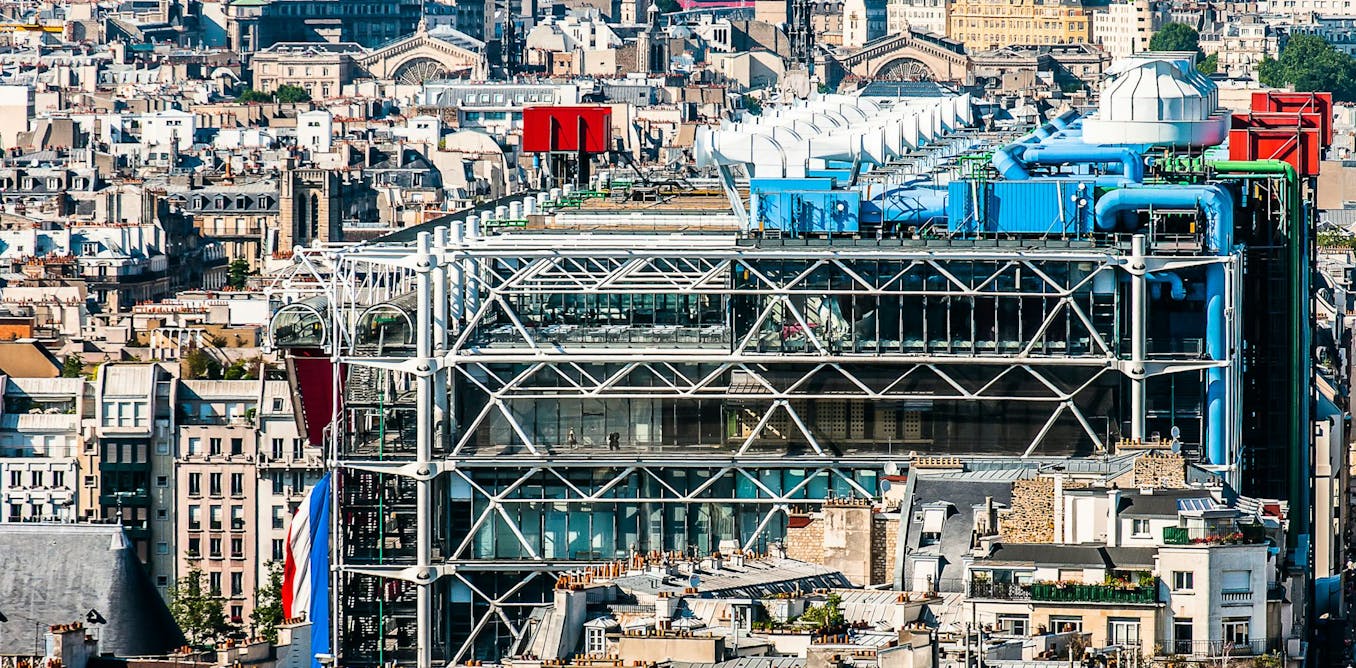Whether known as the Centre Pompidou or simply Beaubourg, this Parisian landmark is set to close its doors from 2025 to 2030 for extensive renovations. Criticised and even mocked at its opening, the Centre Pompidou has since earned its place as an iconic fixture in the Parisian landscape and a major player on the international museum scene. We take a closer look at the institution’s fragile and unconventional business model as it approaches its 50th anniversary.
Inaugurated in 1977, France’s Centre Pompidou will soon celebrate its 50th birthday. This milestone will coincide with its full closure from 2025 to 2030 for much-needed renovations to upgrade and restructure the building.
During the closure, the museum will continue to expand in other ways. A new site will open in Massy (in Essonne department), designed to house its reserves and serve as an exhibition and cultural space. Additionally, the Centre Pompidou plans to strengthen its international presence through temporary exhibitions abroad.
Bruno S. Frey developed the concept of a “museum superstar”, an iconic cultural institution that attracts significant numbers of visitors and generates considerable revenue from commercialising their spaces and collections. These museums, including the Centre Pompidou, play a crucial role in their local economies.
An unsustainable business model
Unlike other superstar museums such as the Louvre or the Musée d’Orsay, however, the Centre Pompidou lacks a blockbuster home attraction like the Mona Lisa. This absence of universally recognisable works makes its economic model more fragile, despite its dynamic programming and bold architecture.
In 2022, the Centre Pompidou’s total budget revenue was just under 132 million euros ($144 million currently), with 69% coming from public funding – a significantly higher proportion than at the Louvre (44%) or the Musée d’Orsay (45%). The centre’s self-generated revenue, though slightly improved since the post-pandemic period, accounted for just 31% of its total income, down from 34% in 2019. Ticketing revenue, crucial for the Centre’s financial independence, dropped by 18% compared to 2019, despite a 2022 overhaul of the fee structure. On a positive note, patronage income increased by 8%, to 6.1 million euros, and revenue from off-site exhibitions and international locations surged by 43%, partially compensating for losses in other areas, according to the centre’s annual reports.
Despite this, France’s national audit office has noted that the museum’s diversification strategy lacks a clear structure and falls short of transparency requirements regarding costs. The centre has frequently adopted a pragmatic approach to solicitations, undermining the long-term sustainability of its economic model.
Balancing economic growth and environmental responsibility
The Centre Pompidou’s economic strategy faces two key challenges, particularly its ticketing: rising competition from private contemporary art institutions in Paris and the ecological consequences of higher visitor numbers.
New contemporary art institutions such as the Fondation Louis Vuitton and the Pinault Collection have reshaped Paris’ cultural landscape. While these venues could be seen as rivals, they also boost Paris’s overall status as a hub for contemporary art, attracting a diverse and informed international audience. The Centre Pompidou benefits from this dynamic ecosystem, though it must compete with these institutions’ financial resources and collections.
Competing yet complementary
Despite the increasing competition in recent years, the Centre Pompidou continues to thrive as a leading venue for modern and contemporary art, thanks to its rich collection and innovative programming. Recent examples include “Évidence” and the immersive exhibition “Noire”.
Paris’s global prominence in the contemporary art world presents both opportunities and challenges for the Centre Pompidou. On one hand, it faces competition from institutions that have iconic collections and even greater financial resources. On the other, it benefits from this vibrant environment, allowing it to maintain its status as a premier cultural destination and strengthen its foothold in the global art market. To fully capitalise on this ecosystem, however, the centre must continue to innovate and adapt to evolving economic and cultural realities, while staying true to its mission of promoting contemporary art.
Environmental challenges
One of the museum’s most pressing challenges is balancing economic growth with environmental sustainability. According to its “Responding to the Environmental Emergency: Action Plan 2023-2025,” the Centre Pompidou is working to reduce its carbon footprint. This is crucial, as 82% of a museum’s carbon impact comes from visitors, particularly international ones who travel by air – an especially polluting for of transport.
Interestingly, the museum’s somewhat lower appeal to foreign tourists, which the national audit office has criticised, may actually prove beneficial in terms of environmental impact. By attracting more domestic visitors, the centre can minimise the carbon emissions associated with international travel, making it a more sustainable institution in the long term.
A sustainable but less profitable approach?
This focus on a national audience could prove to be a sustainable long-term strategy, at a time when ecological concerns are a growing concern. It also strengthens the museum’s local roots, making it more resilient to fluctuations in international tourism and global crises. Nevertheless, this strategy comes at an economic cost, as local audiences are more likely to benefit from reduced or free rates.
While international exhibitions and expansion can provide additional revenue, they also present ecological challenges. Transporting works of art across the globe adds to the museum’s carbon footprint, even as it strives to bring exhibitions closer to international audiences. Additionally, major real estate projects, such as the renovation of the Centre’s historic building and the construction of a new site in Massy, are key to its modernisation but come with considerable environmental costs.
As it prepares for five years of renovations, the Centre must find a way to balance its financial needs with the growing urgency of environmental responsibility. To secure its future, the museum will need to strengthen its financial viability while continuing to pioneer in the world of contemporary art and adapt to the changing demands of the 21st century.



